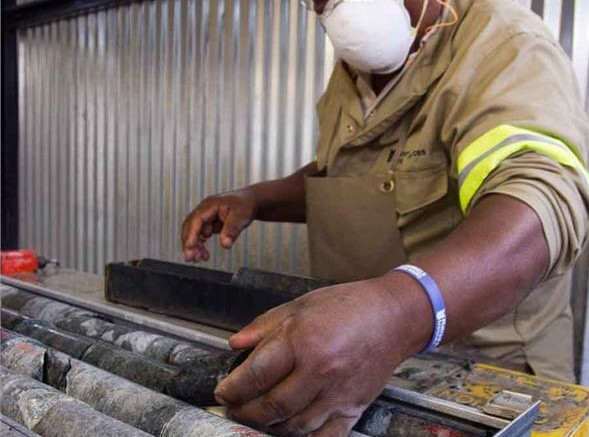The global economic recession caused platinum demand in the car and jewellery sectors to enter a cyclical downturn. However, a substantial supply reduction, after the labour strife in South Africa moved the platinum market from surplus to deficit over the course of 2012.
Europe remains by far the largest market for diesel cars, accounting for roughly 27% of total global demand. Weighed down by recession, spending cuts and high unemployment, the automotive market continues to slip in the eurozone. The European Automobile Manufacturers’ Association is forecasting a 17-year low for full-year sales in 2012 — a severe contraction of 8% to 10%, versus the 7% drop it projected earlier.
However, this weakness in Europe has been largely offset by the increase in platinum purchasing by Japanese manufacturers, as output improves following last year’s natural disasters, according to metals expert Johnson Matthey. Greater demand is also expected from the light-duty diesel sector in India, where sales exploded in 2012.
Johnson Matthey notes that demand for platinum in the jewellery sector is expected to reach a three-year high of 2.73 million oz.
The brightest spot remains China, the world’s largest platinum jewellery market. In the first eight months of 2012, a rebound in Chinese platinum demand was driven by lower average platinum prices and an increase in platinum jewellery manufacturing to stock new retail stores in second- and third-tier cities. Gross demand for the jewellery in China is expected to increase by 14% overall in 2012, according to Johnson Matthey.
Meanwhile, consumer demand for platinum jewellery in India keeps growing, prompting an expansion of platinum jewellery manufacturing and retailing.
Periods of rising prices tend to attract heavy net exchange-traded fund (ETF) investment. Platinum ETF holdings jumped 21,320 oz. to 1.604 million oz. in 2012 — levels that were last seen in September 2011. This was backed by an extra 21,000 oz. in the ETFS Physical Platinum units on the LSE. Most of the inflows were recorded on Sept. 7.
Anglo American Platinum, Impala Platinum and Lonmin are South Africa’s largest three platinum producers, combining to account for 64% of global platinum production and 89% of South African production.
Violent labour unrest in the South African mining industry intensified this year, starting in January with a stoppage by workers at Impala Platinum, the world’s second-largest platinum producer, followed by an illegal six-week strike that began in August at Lonmin’s Marikana platinum mine. The world’s largest platinum producer, Anglo American Platinum, saw labour stoppages shut down its Rustenburg mine in October.
Months of unrest have decimated South Africa’s platinum output. Stillwater, one of the few major platinum producers outside of South Africa, concludes that this year’s strikes at Impala, Lonmin and Amplats could reduce this year’s global PGM production by an estimated 650,000 to 1.2 million oz. platinum, 170 oz. palladium and 80,000 oz. rhodium. This corresponds to a 9% drop worldwide and a 13% drop for South Africa. This estimate is confirmed by Johnson Matthey in its latest Platinum 2012 Interim Review, which points out that platinum supplies from South Africa are forecast to fall by 12% year-on-year to 4.25 million oz. — an 11-year low.
Lonmin and Impala raised workers’ wages 20% to settle illegal strikes, while strikes at Amplats have just been resolved on similar terms. It’s looking like these settlements will increase the whole South African platinum-mining manpower overhead by 20%.
As determined in 2010 by the South African government, electricity prices go up more than 25% each year in three-year terms, meaning a predicted doubling of the average current rate in 2013.
Compared to 12% production decrease in South Africa and 5% decrease in Russia, platinum production in North America will have remained stable throughout 2012.
Although the overall market share held by North American suppliers is small (only 6% in 2012), it will increase, along with improvement of its strategic significance, by providing commodity exposure without the higher geopolitical risks associated with South Africa and Russia, the major PGM-producing countries.
New sources from stable regions like Canada will be increasingly relied upon in the near future.
The U.S. Geological Survey noted this year that Canada ranks fourth in terms of the world’s platinum resource base. In Canada, the Sudbury basin in northern Ontario has the largest number of PGM-producing mines, where platinum is produced as a by-product of nickel mining.
The two major players in this area are Xstrata and Vale. Xstrata’s Sudbury operations consist of the Nickel Rim South mine, Fraser mine, a mill and a smelter. The Nickel Rim South mine is Sudbury’s largest mining operation, and is expected to provide high value ore feed for more than 15 years. Vale’s operations in Sudbury are among the largest in the world.
North American Palladium is Canada’s only primary producer of PGMs. It owns the Lac des Îles mine near Thunder Bay in northwestern Ontario. Ore from the mine is processed into a concentrate rich in palladium, with some platinum and base metals.
A number of future sources exist in other parts of the country. The Yukon, well-known for its gold, hosts Prophecy Platinum’s flagship Wellgreen property — one of the world’s largest undeveloped nickel-sulphide projects that contains a unique platinum and platinum resource.
It’s clear that the time has come to dedicate resources to explore for new platinum mines and deposits outside of South Africa. With a chronic deficit market looming, new platinum projects in Canada and elsewhere patiently await courting by international platinum investors and producers.
— Based in Vancouver, the author holds an MBA and CFA designation, and is the investor relations officer with Prophecy Platinum. See www.prophecyplat.com for more.


Be the first to comment on "Commentary: The state of global platinum supply"